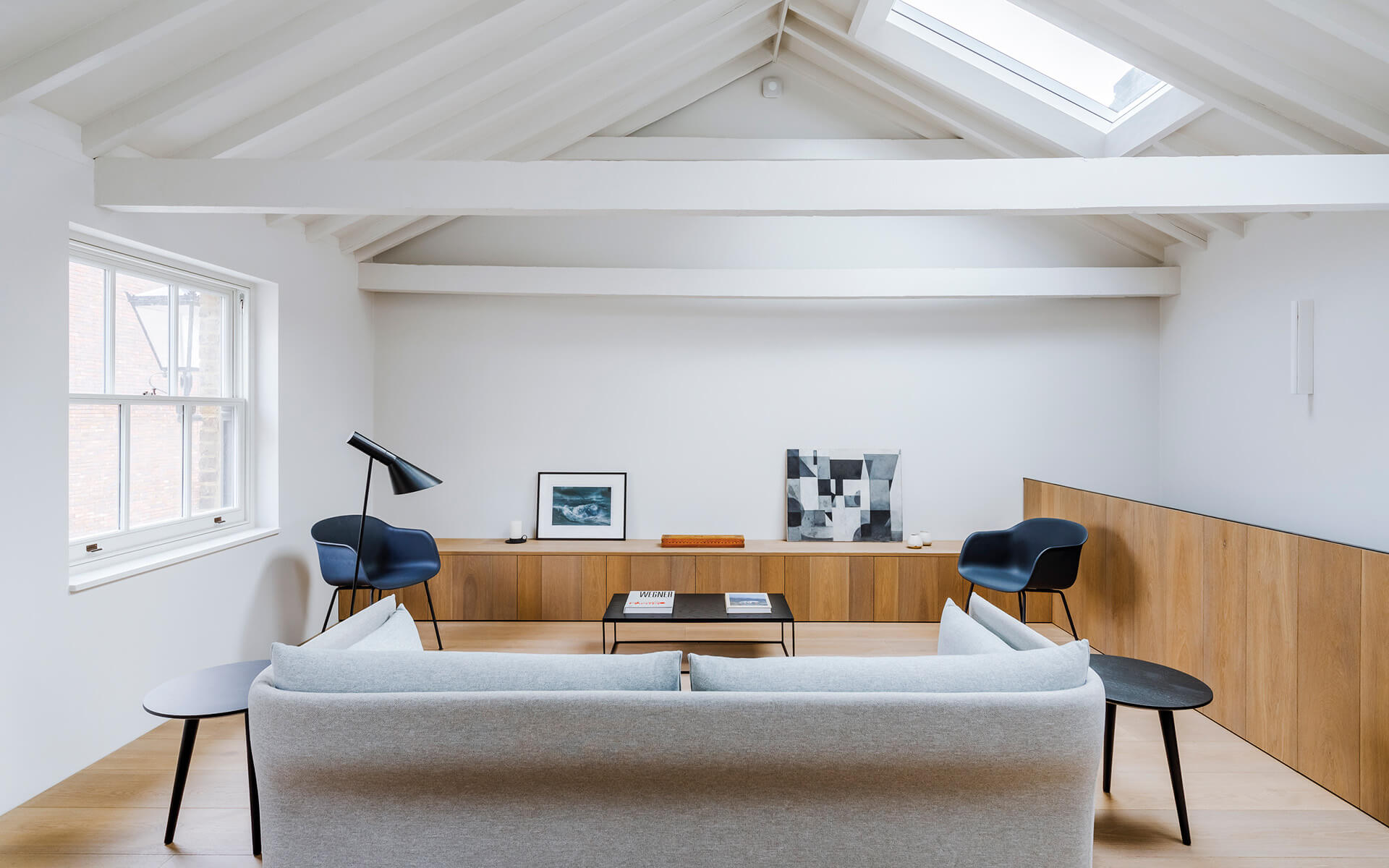Perfecting the pied-à-terre
The rise in hybrid working and country living has led to a market for small but perfectly formed city centre homes. Cathy Hawker takes a look through the keyhole
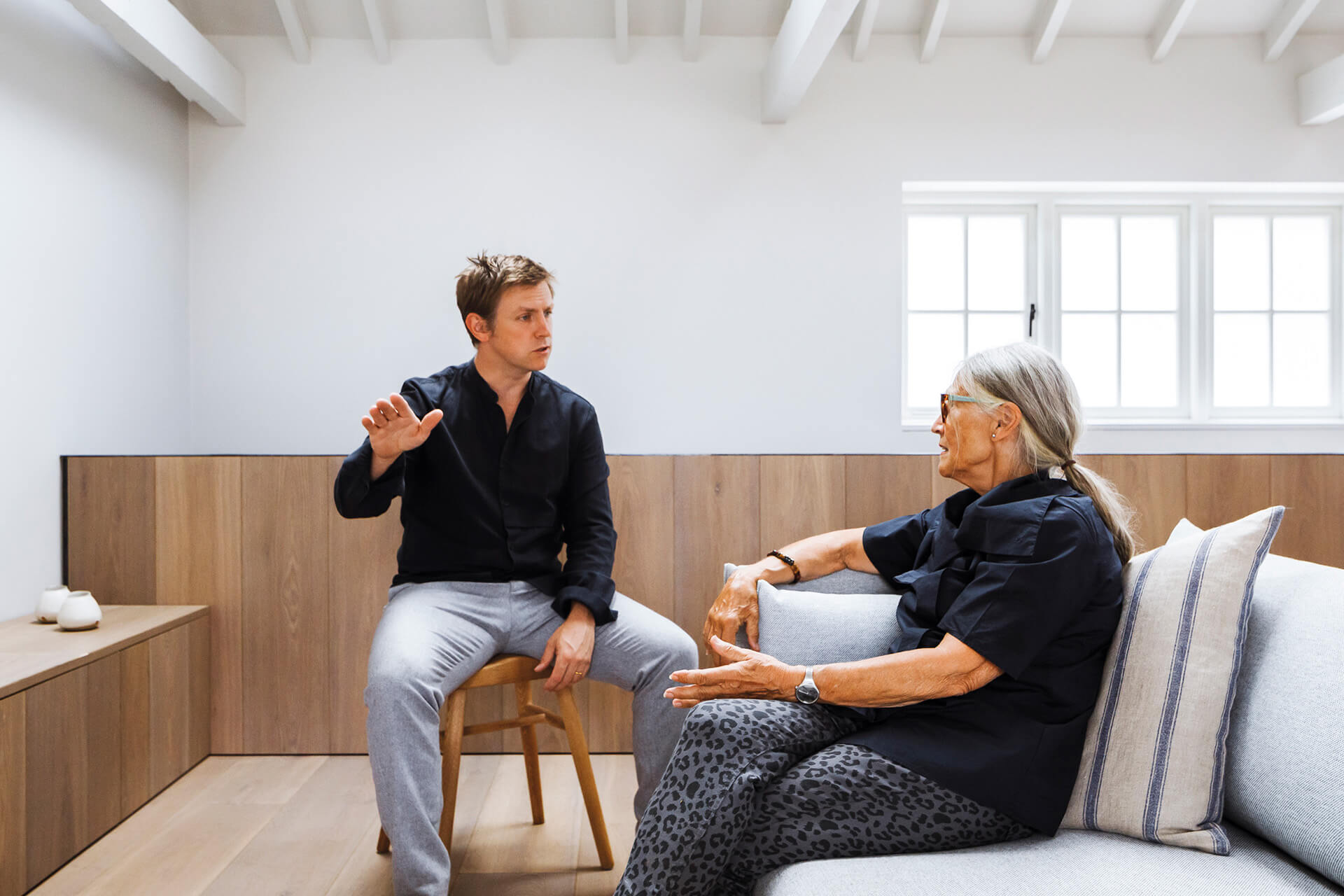
There’s something unmistakably escapist about the concept of a pied-à-terre, a bijou residence, smaller than your main house and hopefully more manageable, probably in the city and generally intended for only one or two people. The expression, first used in the 18th century by French cavalrymen finding overnight lodgings, translates as ‘foot to the earth’ and today it refers to a base for a couple of nights a week, a short-term home from home, an after-work metropolitan crash-pad.
What makes the perfect pied-à-terre? “Convenience,” says architect Luke McLaren, co-director at London-based practice McLaren.Excell. “That’s what clients want. Somewhere they can walk in and immediately feel at home, that provides a quick in and out, easy to arrive at and easy to leave. These are not family homes. They exist for convenience rather than for family life and because you’re away from home and often there alone, they should provide a soothing environment that feels calm and relaxed – more homely than a hotel.
“Demand for city centre pied-à-terres has roared back into vogue. Within one year of the first lockdown, those buyers who spearheaded the ‘escape to the country’ trend had already discovered that the combination of country and city living was the best way to facilitate the brave new world of hybrid working. Knight Frank figures show that so-called ‘boomerang buyers’ looking for a London apartment rose from seven per cent of all would-be purchasers in mid-2020 to 49 per cent at the start of 2022 as the rigours of a regular longer commute – even just for a few days each week – hit home.
A pied-à-terre should provide a soothing environment, calm and relaxed – more homely than a hotel

Choosing a primary residence in the country and a smaller city pad is a change of emphasis that McLaren has experienced first-hand. “It’s a clear reality of this post-Covid world,” he says. “People are now working two or three days a week at home. Factor in the weekends and that means they’re spending five days a week out of town, making a larger country home and a city pied-à-terre increasingly desirable. That’s reflected in the work we do, both in bigger homes in the country and smaller ones in city. We’ve just finished a project near Old Street in Shoreditch which is exactly that, a two-bedroom, open-plan pied-à-terre. It’s a lovely place to spend three days a week while our clients work in the City, but their principal family home is in Bath.
“McLaren completed another pied-à-terre project this summer, transforming the mews property attached to a former family home in Marylebone for his client (and Knight Frank client), Maria Jacobsson. She and her husband had raised their four children in a light-filled Regency house on a garden square but last year, with the children all gone, they moved out to Oxfordshire, selling the London house but retaining the attached mews property.
“I decided to keep the mews as it’s a great base and it’s also easy to rent,” Jacobsson explains. “The timing seemed perfect because as more people move out of London, the demand for a smart pied-à-erre remains strong. But it was a dark and dingy space before; a double garage with a studio on top, low ceilings, little natural light and either too hot in summer or too cold in winter. I decided to thoroughly upgrade it, turning it into something special with seriously nice detail.”
That detail includes custom-made joinery and panelling throughout, artisanal metalwork by the team who worked on One Hyde Park and polished concrete flooring downstairs, with white oiled oak floorboards upstairs. Big ticket spends include a new façade and double glazing, repointed brickwork and carefully hidden LED lighting that subtly alters the mood after dark. McLaren removed the roof, adding a ‘warm roof’ with the insulation on the outside that highlights the beautiful original rafters while also regulating the temperature year-round. Heating is all underfloor with no radiators and no hot water tank.
The result is an inverted mews house, with two bedrooms downstairs and an open-plan living area upstairs, a calm and airy space, predominantly white with accents of black on the balustrades and the pared-back furniture choices. “Simple and consistent, light and spacious throughout,” explains McLaren. “It’s always hard to self-edit as an architect but in a pied-à-terre, it’s especially essential.”
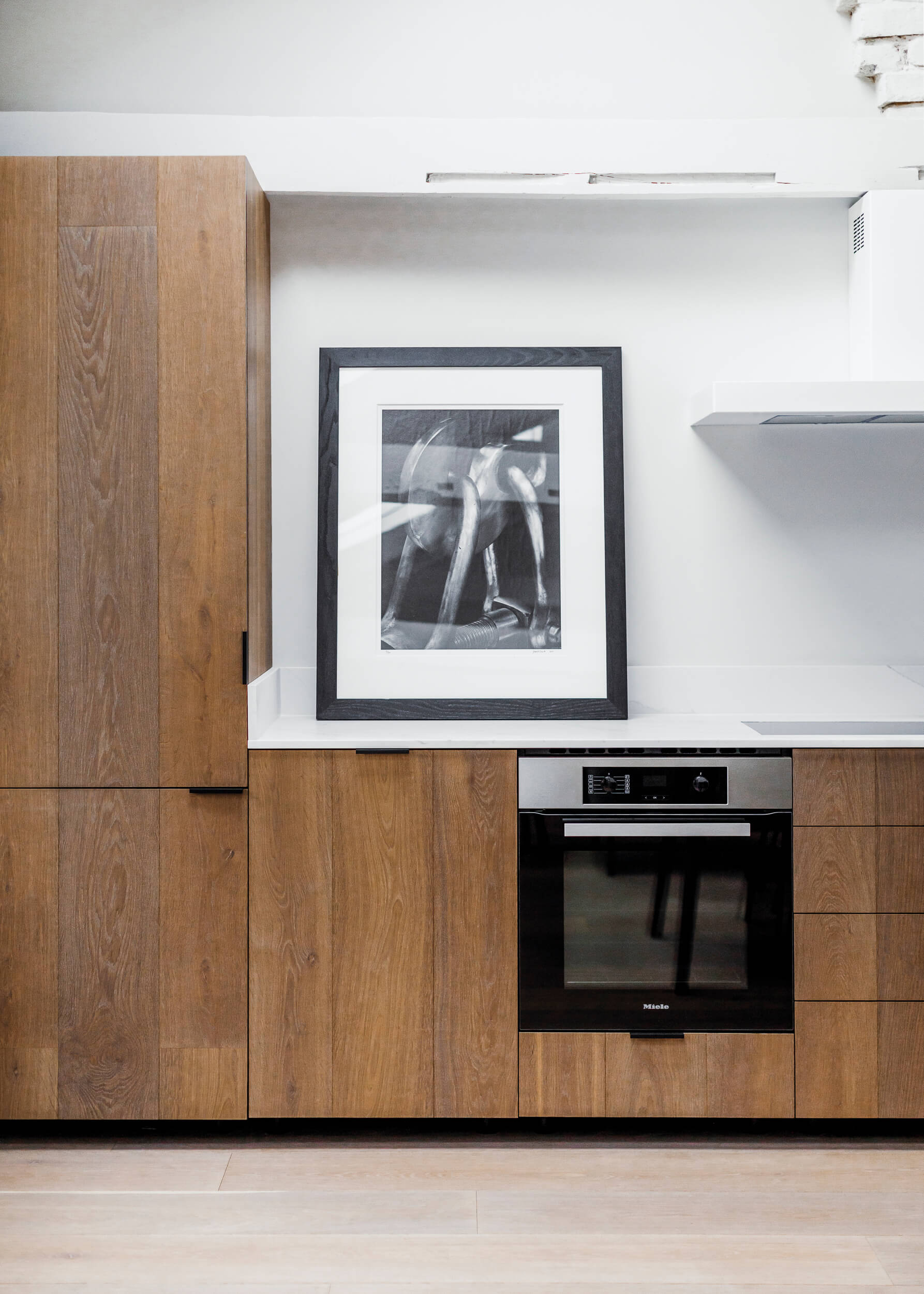
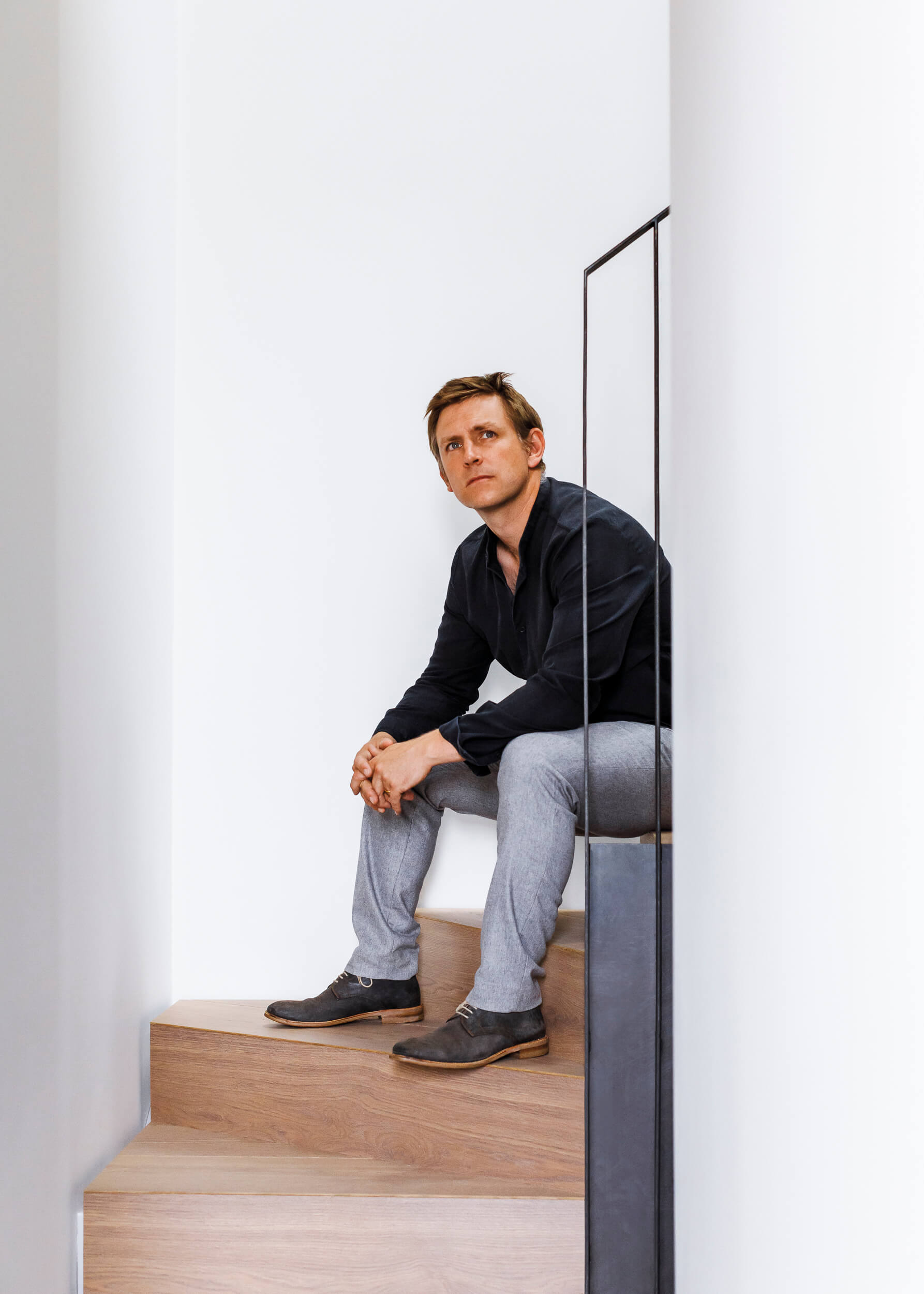

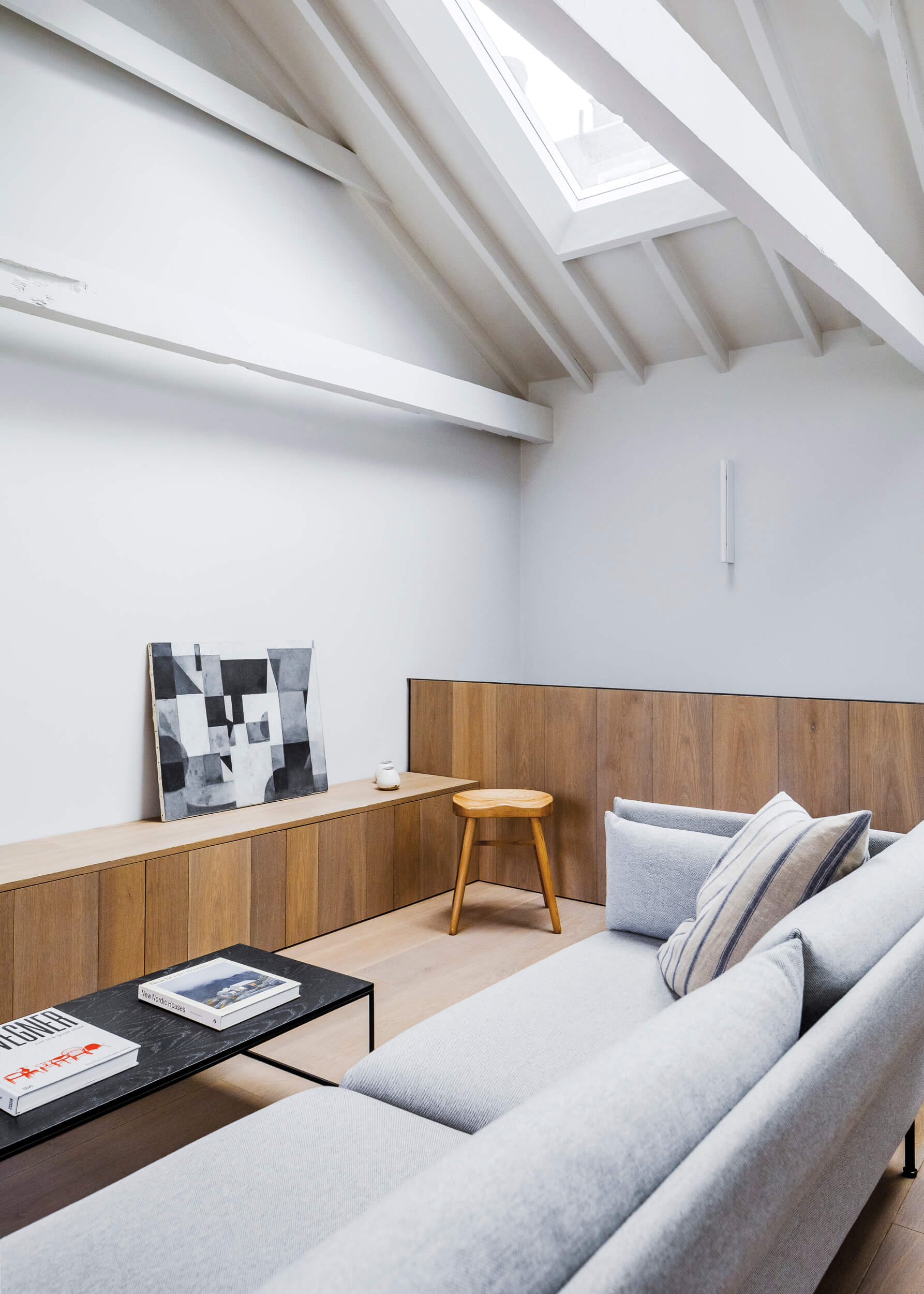
After eight months work, Maria has swapped a 6,000 sq ft, five-floor London property for a 906 sq ft city crash pad, getting the versatility she required and keeping the light she craved. “The pied-à-terre gives me options,” she says. “I can have it forever to either use for myself or to rent out. I love London but I don’t want to live there full-time anymore. To end up with such a good-sized property in such a central location, just a few steps from Marylebone station and excellent transport links, yet in such a quiet street, was always the goal.”
The appeal of a city bolthole such as this is self-evident, and the increasing demand for refined metropolitan apartments is expected to remain high well into 2023 and beyond. Boutique urban properties are practical, visually appealing and eminently user-friendly. If you too are thinking of relocating to the country, a city pied-à-terre can deliver both convenience and elegance – a ‘foot to the earth’ to covet.
